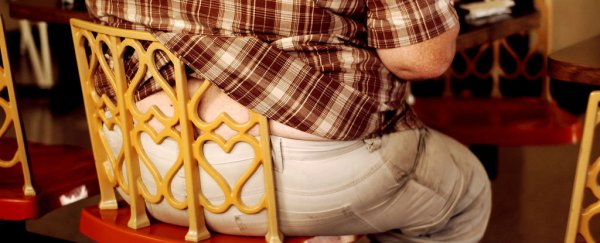In footage that looks like the culinary version of Viserys' famously gruesome death scene in Game of Thrones, YouTuber Tito4re is seen pouring molten copper over a McDonald's Big Mac. Experimenting on McDonald's products to show how indestructible and indigestible they are is a thing, but in this case, you can blame science, not the burger, for these puzzling results.
The video shows that as soon as the molten copper makes contact with the burger bun, it starts to ball up and roll off the surface.
And while the top of the bun is well and truly burnt by the end of it, we're shown that the rest of the burger underneath is completely fine - the molten copper didn't get even close to melting through the surface of the bread. Buns of steel!
We also see a similar effect on the burger patty when it's directly exposed to the molten copper, and just so you know, that copper is heated to around 1,093 degrees Celsius (2,000 degrees Fahrenheit).
Pretty nuts, right? Well no, not at all, if you know your basic physics.
As Dan Evon at Snopes points out, the video footage is real, but the implications that Big Macs are bad specifically because they don't melt from molten copper exposure are false. "In fact, the results showcased in this video (just like experiments with seemingly non-rotting hamburgers) could likely be replicated with any burger (or similar food item), regardless of brand," he says.
The phenomenon that's being demonstrated here isn't terrible food, it's the Leidenfrost effect, which we last saw in this awesome video of molten salt being added to water.
You can also see the Leidenfrost effect in action here, where molten copper is poured into water, and here, where it forces water into an amazing star shape on a hot surface.
The Leidenfrost effect is defined in physics as when a liquid comes in contact with a mass that's significantly hotter than its boiling point, and produces an insulating vapour layer that protects the liquid from boiling and evaporating away immediately.
You've probably seen it in cooking when you get drops of water on a really hot pan - the water balls up and skids across the surface, protected by a layer of water vapour.
So in the case of the Big Mac, some of the moisture in the burger bun boils when it comes into contact with the molten copper, and this produces a strong, insulating layer that initially protects it.
As Snopes points out, the guys from Mythbusters demonstrated this effect in 2009 by showing that you could dip your hand into molten lead without getting burned:
Still though, do not try that at home…
So don't let your friends use the footage above as an excuse to heap sh*t on MacDonald's on social media - we're not saying Big Macs are healthy by any stretch of the imagination, but in this case, they're just following the basic laws of physics.
Remember: friends don't let friends share viral videos without full knowledge of how awesome the science is.
